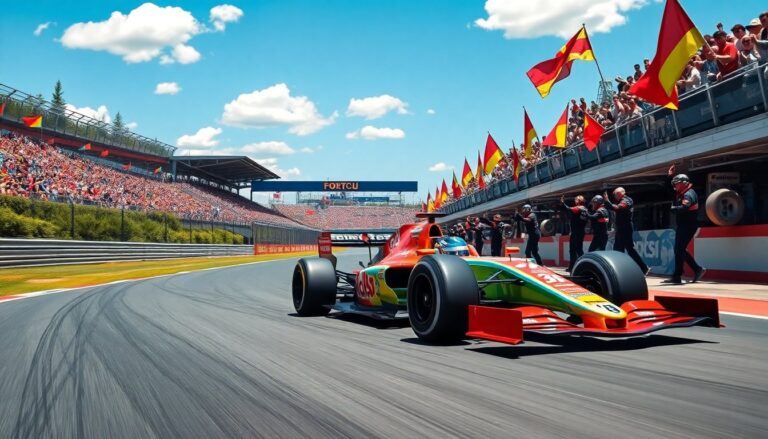Argomenti trattati
Formula 1, commonly known as F1, represents the apex of motorsport, merging speed, technology, and strategy in a high-pressure setting. Each race transcends the simple goal of crossing the finish line first; it involves intricate engineering and strategic planning. Fans and newcomers alike are drawn into a realm where every millisecond is critical.
The appeal of F1 extends beyond the races. It showcases a mix of intense competition, advanced technology, and a global fanbase passionately supporting their preferred teams and drivers. With events held in notable locations worldwide, the F1 experience is exhilarating both on and off the track.
The facts
At the core of Formula 1 are the teams, composed of diverse groups of engineers, drivers, and strategists. Teams such as Mercedes, Ferrari, and Red Bull Racing have become well-known, each contributing their distinct style to the competition. The collaborative effort within each team is essential for success, as every individual plays a significant role in enhancing car performance and race strategy.
Understanding team dynamics
Team dynamics in F1 are complex and highly competitive. Each team functions like a finely tuned machine, where the roles of driver, engineer, and strategist interconnect. The driver must deliver immediate feedback to the engineers regarding the car’s performance, while the strategist formulates race plans based on factors such as weather and tire performance. This collaboration is vital for navigating race complexities.
Race strategy and decision-making
Decisions made during races can profoundly affect outcomes. Teams must continuously assess data on tire wear, fuel levels, and competitors’ strategies. For example, the timing of a pit stop can define the race. Balancing risk and reward is an ongoing challenge; a well-timed pit stop may propel a driver to victory, whereas a poorly timed one could lead to failure.
The technology behind the speed
Technology in Formula 1 is groundbreaking. The cars are engineering marvels, featuring advanced elements that boost performance. From hybrid engines to aerodynamic designs, every component is crafted for maximum efficiency and speed. The use of data analytics and simulation technology is crucial for car development and race preparation.
Innovations in car design
The progression of car design in F1 is driven by demands for speed and safety. Innovations such as the halo device, a protective structure surrounding the cockpit, exemplify the sport’s dedication to driver safety while maintaining performance. Furthermore, advancements in materials science have resulted in lighter, stronger components that enhance speed and maneuverability.
The role of data analytics
Data analytics has revolutionized racing strategies. By gathering extensive data during practice and races, teams can make informed decisions. This data includes everything from tire temperatures to engine performance metrics, enabling real-time adjustments. Employing machine learning algorithms, teams can anticipate outcomes and refine their strategies more effectively than ever.
The global fanbase and culture
The global allure of Formula 1 is indisputable. With millions of fans across continents, F1 has cultivated a unique culture that celebrates not just the sport but the lifestyle it fosters. From fan events to social media interactions, the relationship among teams, drivers, and fans has intensified.
Looking toward the future of Formula 1, it is evident that the sport will continue to advance. With ongoing innovations in technology, team strategies, and fan engagement, F1 remains an exhilarating spectacle that captivates audiences worldwide. Whether a devoted fan or a curious newcomer, the world of Formula 1 offers excitement, innovation, and memorable moments.

